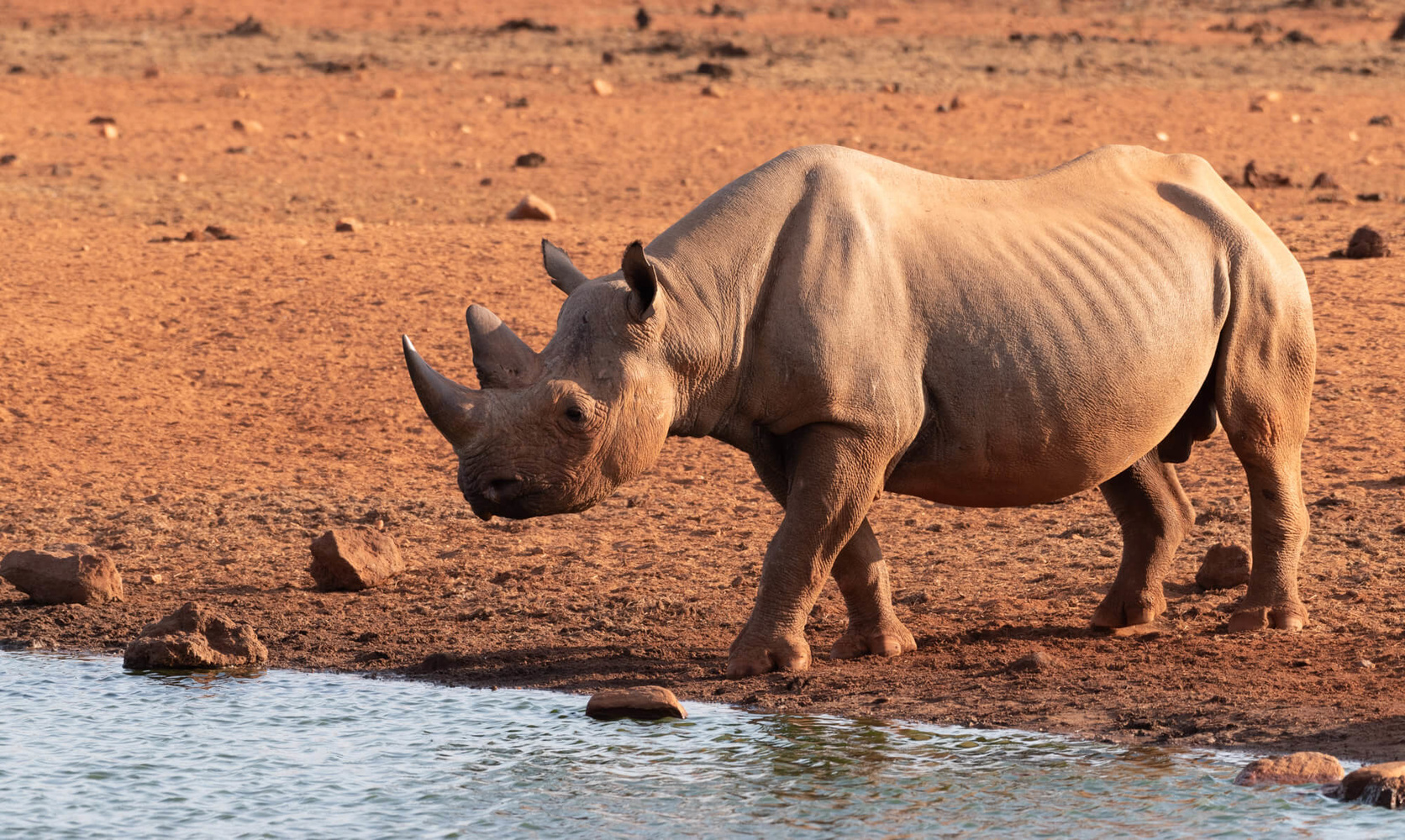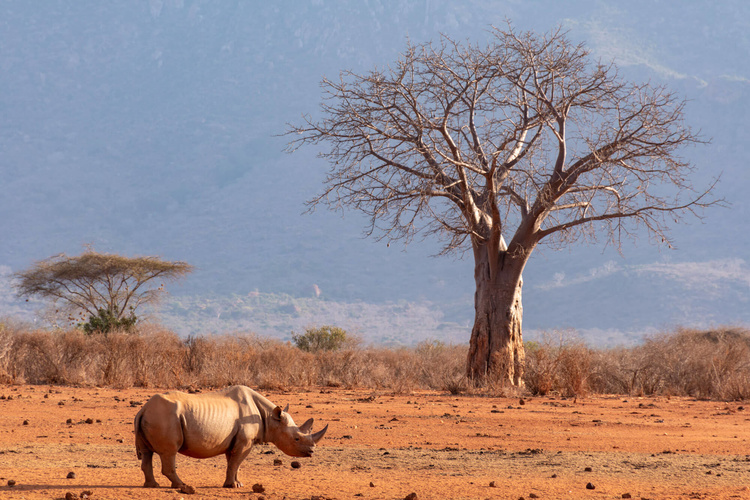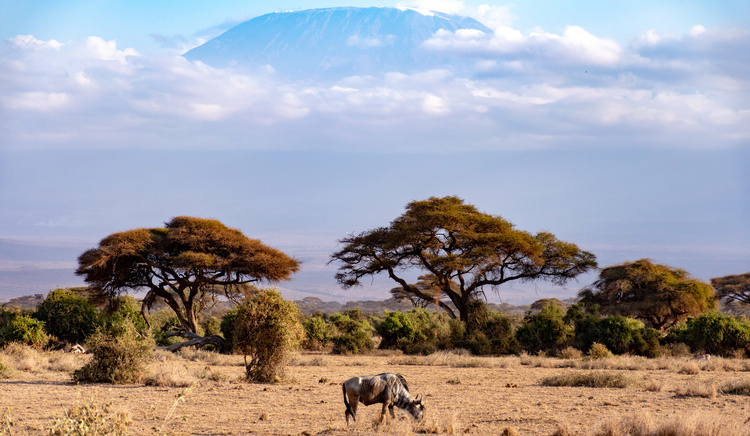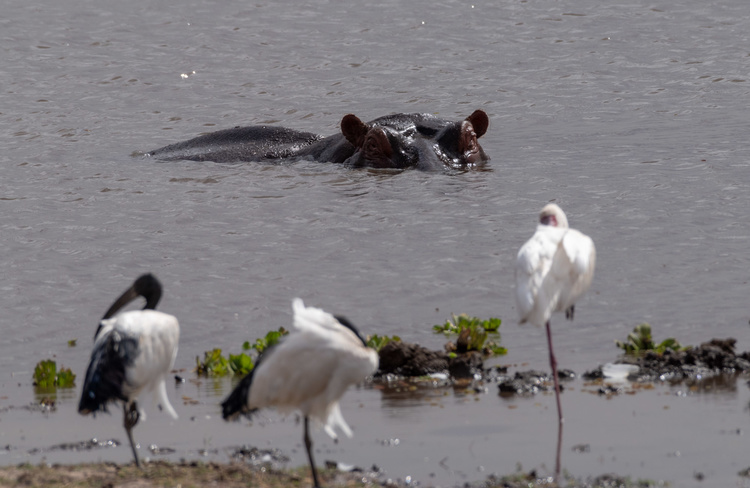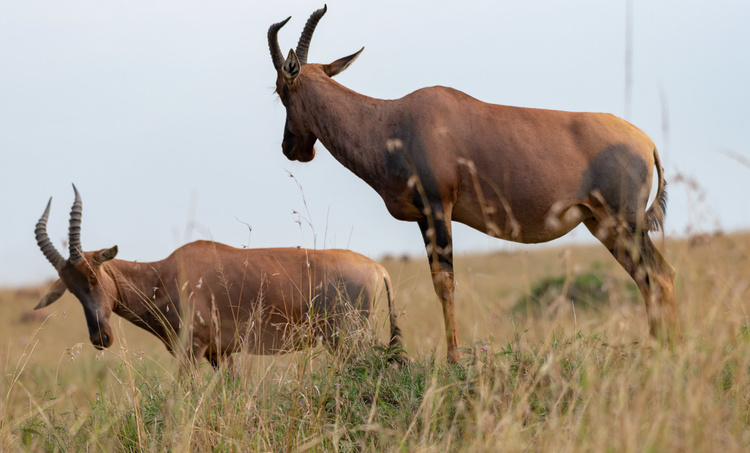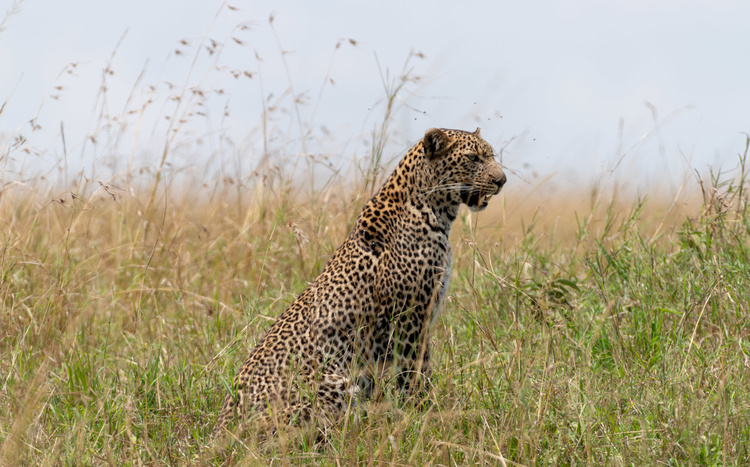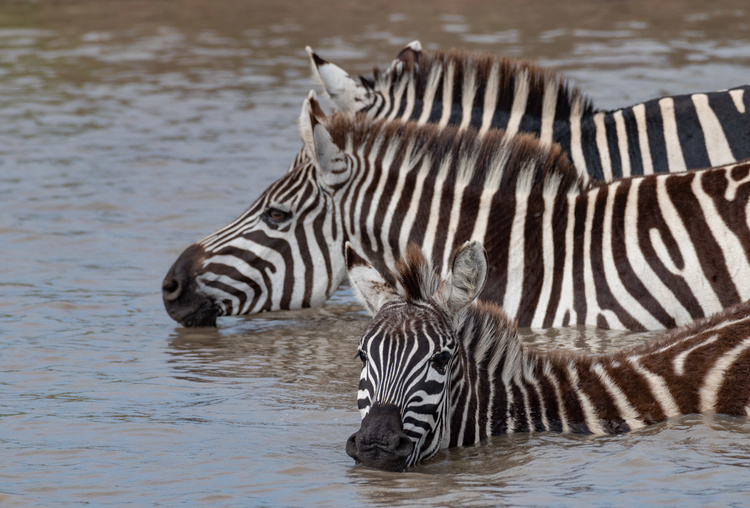Southern Kenya's great parks, 100% safari
From US$6,524 per person
Itinerary
-
Day 1Nairobi - Masai Mara
Early morning departure from Nairobi to try to avoid the numerous traffic jams that slow down travel to the city gates. After the northern expressway, we head due west towards Narok. Villages and small towns follow one another, and the roadside scenes gradually reveal some of the habits of Kenyan life. After Narok, you're on Masai land, with fewer villages as you approach the Masai Mara reserve. Settle in at your camp outside the park for a free day on the banks of the Talek River.
-
Day 2Masai Mara
Covering some 1,510 km² along the border with Tanzania, the Masai Mara is by far the country's best-known and most visited game reserve. A World Heritage Site, the Masai Mara is the Kenyan extension of Tanzania's Serengeti National Park. The reserve's name is derived from the river that flows through it, Mara, and the people who live there, the Masai. It is home to a rich fauna, with 2.5 million herbivorous mammals that delight the reserve's predators. Twice a year, the animals migrate from one reserve to another in search of the best grazing. Wildebeests and zebras gather in their millions during this transhumance. The group can be dozens of kilometers long! The most moving moment of this spectacle comes in July. First big day on safari. You usually set off for the day's safari with a “lunch box”. Depending on the season and the wildlife, your guide will choose a route, sometimes through the plains, sometimes along small rivers, or towards the Mara or Talek rivers when wildebeest are present.
-
Day 3Masai Mara - Lake Nakuru
Morning departure north towards Nakuru National Park. You leave the Masai Mara region and head back towards the town of Narok. A few kilometers after passing through the large town of Narok, where numerous street vendors have already set up their stalls on the roadside, you turn off north towards Nakuru. The pleasant road climbs steadily in altitude, and as it goes on, you're treated to beautiful mountain scenery, the folds of the Rift Valley. Numerous cultivated plots dot the road before descending to Lake Nakuru. Arrive at the park for lunch, check into the lodge and depart for your safari. Lake Nakuru is frequented by flamingos and pelicans. The park is home to a wealth of wildlife, including Rothschild's giraffe, white rhinoceros (easy to spot) and reed antelope. Buffalo, waterbuck and lion complete this non-exhaustive list.
-
Day 4Lake Nakuru - Naivasha
You start the day with a morning safari in Nakuru Park, where you'll have another chance to see the rhinos near the lake or the colony of flamingos in the shallow waters. In the late morning, departure for Lake Naivasha. Lake Naivasha is one of the few freshwater lakes in the Great Rift Valley. Located at the foot of the Longonot volcano, some 100 km from Nairobi, it is home to an incredibly diverse flora and fauna. After lunch, explore Crescent Island on foot and take a boat trip on the lake. Return to the lodge in the late afternoon.
-
Day 5Naivasha - Amboseli
Morning departure for a long transfer day between the rift valley region and the south of the country. You join the expressway in the town of Nakuru to reach Nairobi fairly quickly, which you bypass via the southern expressway. From there, it's on to the south of the country and the Amboseli reserve. The road is quite long and sometimes slowed down by the numerous trucks, but there's no other way to reach the south. Arrive in Amboseli mid-afternoon, with a view of Kilimanjaro if the weather is clear. Check-in at your lodge a few kilometers from the park.
-
Day 6Amboseli
On the border with Tanzania, Amboseli National Park is one of Kenya's oldest national parks, but also one of its smallest. Nevertheless, it remains one of the most beautiful in the country, north of Kilimanjaro, where the latter can be seen (sometimes) at sunrise and sunset. One of Kenya's best-known postcards! The dry, swampy savannah of Amboseli is home to many species, including the elephant, Kenya's largest population. You can observe them in the swamps on dry days, basking in the refreshing water. This poach-free park offers a unique experience to travellers, who can easily get up close to these pachyderms with their spectacular tusks. The park takes its name from Lake Amboseli, an immense dry basin with cracked ground. The clouds of dust that rise from the lake contrast with the lush green vegetation of wetlands such as the Enkongo Narok Swamp. These swamps are also home to buffalo and hippopotamus, while giraffe, zebra and gazelle gather in the shade of the acacia trees. A day devoted to wildlife observation and exploring the park.
-
Day 7Amboseli - Tsavo West
You leave the Amboseli region in the direction of Tsavo West. The track crosses Masai lands before reaching the western part of the immense Tsavo Park, which is divided by the main road and the railway line linking Nairobi to Monbasa. You enter the park via the Mbuyuni gate and the lava fields, the most famous of which is the Shetani (Devil) flow. Then a short detour to Mzima springs, which supply 30 million liters of water a day to the city of Mombasa... From here, you climb up to the Ngulia Hills. While the bush over much of the terrain makes it difficult to observe animals, you can still spot numerous elephants, buffalo, giraffes, a few herds of oryx, giraffe gazelles and, at the end of the day, the black rhinoceros protected in the Ngulia Rhino Sanctuary, all against the backdrop of the majestic Ngulia Mountains and large baobab trees.
-
Day 8Tsavo West - Tsavo East
You gradually leave the western part of the park to reach just the other side of the main road and the railroad line (the new one, but also the old one built at the end of the 19ᵉ and which was the macabre scene for many employees from India devoured by lions). A national park since 1948, Tsavo is one of the oldest in Kenya and one of the largest in the world at 20,812 km². Afternoon safari in this park, where the red earth gives the animals their distinctive coloring. You gradually return to your lodge in the park.
-
Day 9Tsavo East
A great day's safari in the Tsavo East, with its succession of plains, bush and forest along the Voi River. Fewer in number than before, the lions are nonetheless very present alongside the most visible mammals: elephants, Grant's gazelles, zebras, impalas, hartebeests, giraffes, large herds of buffalo, dik-dik, baboons and oryx. Cheetahs and leopards are also present in the park. The day passes at the pace of your observations. Depending on your mood, you can decide to leave for the day or return to your lodge for lunch.
-
Day 10Tsavo East - Nairobi
After a final morning safari, you slowly leave the park through the south gate in the late morning. From here, it takes around 2h30 to reach Nairobi airport and catch your flight to Europe.
You can also continue your trip with a few extra days on the Indian Ocean.
Contact us if you are planning an extension to Mombasa or the Indian Ocean coast.
Prices
Price conditions for your safari in Kenya
Price Per Person
Price Include
- Transport in a private tour mini-bus with a pop-up roof or 4x4 (depending on the option chosen)
- Unlimited kilometers
- Services of our professional English-speaking driver guide
- National parks entry fees
- Drinking Water (refer below)
- Hotel accommodation on Full Board basis sharing room (refer below)
Not Included in the Price
- Visa fee
- International flight
- Transfers were not applicable
- Travel and cancellation/medical insurance cover
- Hotel accommodation in Nairobi (please consult us)
- Single Room (under single Supplement terms)
- Beverages, Alcohol, Spirits
- Reusable Water Bottle for refilling (Very Important)
- Photographic fee with the local people
- Eventual tips
- Any items or expenses of personal nature
- Any other items not mentioned in the inclusions
Travel info
Here is some practical information for your safari in Kenya
Accommodation during your safari in Kenya
- Sentrim Amboseli camp (outside park)
- Ngulia Lodge (inside park)
- Sentrim Tsavo East (inside park)
Transport in safari
Other Useful Information to travel in Kenya
- No plastic bags in to Kenya
- No plastic bottles in the Game Parks and Reserves
- Carry your COVID Vaccination Certificate
Entry requirements for Kenya
- Mandatory passport valid 6 months after your return date
- Since January 4, 2024, entry to Kenya has been subjected to an electronic travel authorization (ETA), in place of a visa.
Sanitary conditions for Kenya
- Yellow fever
- Malaria
- Consult your GP or an International Vaccination Centre to assess your state of health and receive health recommendations, particularly concerning vaccinations
- Set up a personal pharmacy
Climate
What to Pack for your safari in Kenya
- Good quality sandals
- Good quality light walking shoes
- Casual shoes for evenings
- Light boots for your own comfort in the evening
- Practical safari jacket
- Fleece jacket
- T-shirts
- Short and long sleeve shirts or blouses
- Shorts and long casual trousers
- Enough underwear, socks and hankies
- Bathing suit-Toiletries, lip balm and scarves
- Miniature wet towel and Kleenex (enough)
- Small backpack
- Small reusable water bottle
- Small flashlight or headlamp
- Good quality sunglasses
- Safari hat or cap
- Personal medication
- Important Quality mosquito/insect repellent (for body)
- Quality sun blocker cream/sunscreen
- Binocular and Guidebooks
- Camera with extra battery and memory card

